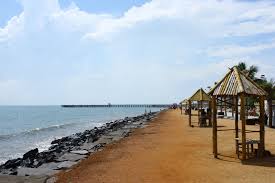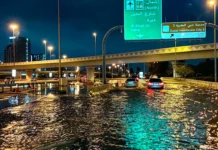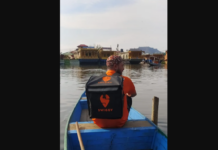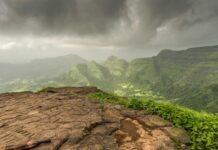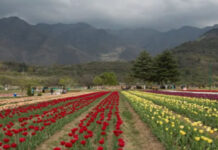 A pleasant mix of the East and West
A pleasant mix of the East and West
Pondicherry, though small in geographical size, was the largest French colony in India. The city has a long and interesting history of trade and war. There is a strong French influence on the architecture of the city, especially in the old quarters, with Rues and Boulevards lined with Mediterranean-style houses and bakeries, although the city remains very much Indian. French is still understood, and the whole city makes for a pleasant mix of the East and West. It is also known as The French Riviera of the East (La Côte d’Azur de l’Est).
Visiting Tamil Nadu and approaching Pondicherry by land, it is very likely to experience mild culture shock on discovering French architecture and restaurants serving steak and good wine. The city has a dual personality: crossing the central canal from the east to the west reveals two different cities with very different character.
The main language spoken in the area is Tamil, though French is also widely spoken. Telugu and Malayalam are the other two official languages, but their use is generally confined to specific districts. English is spoken by most educated people, and is the lingua franca between people from different linguistic districts. Knowing English or Tamil is necessary to survive in the district as French alone will not help.
Places of interest:
Bharti Park:
The Government Park or Bharati Park is in the green centre of the French Town and its lush trees provide ample relief from the scorching sun on a hot summer day.
Botanical Garden:
The Botanical Gardens add great educational and recreational value to Pondicherry. The gate leading to the garden is reminiscent of French architecture and it stands out from its immediate surroundings because it is smack in the middle of the old Tamil town.
 Chunnambar:
Chunnambar:
This tropical paradise is flanked by a quiet-flowing creek on one side. Sailing downstream to the sands and pitching up a cozy seaside while overnighting within the tree-houses on the backwater provides a relishing experience of the great outdoors.
Pondicherry Museum:
The museum has a collection of rare bronzes and stone sculptures from the Pallava and Chola dynasties and artifacts excavated from Arikamedu (an ancient port just 7 kms. from city that had trade links with the Roman empires).
Oustery Lake:
The 390 hectares lake (part of it lies in Tamil Nadu) supports a variety of fauna and flora. The vegetation ranges from small herbs to trees, which supports migratory avifauna as well as native birds during summer and winter.
Paradise Beach:
This pristine private beach is meticulously taken care of and offers a host of benefits – from food and beverages to showers and restrooms, all just a few meters away. Swimming is permitted close to the shore only, as currents can be strong.
Basilica of the Sacred Heart of Jesus:
Inside the church there are glass pictures of 28 saints who were related to the devotion of Sacred Heart of Jesus. Statues of the four evangelists were erected, beneath which there are four lamp posts describing their lives and inviting Jesus and the twelve apostles, on the front facade.
Manakula Vinayagar Temple:
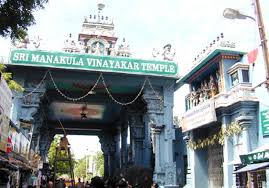
An important itinerary of Pondicherry pilgrimage is a visit to the Manakula Vinayagar Temple. The monumental interiors of the temple are decorated with forty incarnations and forms of Lord Ganesha, carved on the stone walls of the temple. The golden spire forms the superstructure of the temple and is the steeple that crowns the place of worship. Within the premises of the temple lies the shrine devoted to Lord Murugan.
Things to do:
- Meditation at the Auroville and Sri Aurobindo Ashram
- Bharatanatyam performances in local temples
- Scuba diving and experiencing aquatic life at Temple Adventures
- Surf lessons at Kallialay Surf School
- Massage courses at The Healing Hand Centre
Things to buy:
Handmade paper: The range of colors and scope of textures of Pondicherry’s homemade paper is marketed all over the world.
Leather: Making leather in meticulously is what separates Pondicherry from rest of the cities in India. Well polished and creative products with quality brass buckles are available in reasonable prices here.
Pottery: Pondicherry is known for artisan and ceramic work. Different kinds of shops offer distinctive styles such as Rhinestone Art and Golden Bridge.
Textile and clothes: Since a long time, Pondicherry has been involved in the production of garment textiles and household items. There are also plenty of stores which sell T-shirts and some well known types of clothes at surprisingly low rates.
What to eat:
Pondicherry is known for its wide variety of cuisines ranging from South Indian delicacies like Idly and Dosa to seafood like fried fish, Prawn Bajji and Parota.
French influence can be seen to some extent in the local food. The best options are still the local delicacies; the excellent seafood. Good French food is available at restaurants around the French part of town.
Best time to visit:
The month of August is also considered to be as the best time to visit Pondicherry as the celebration across the city is held to commemorate the birthday of Sri Aurobindo. Winters are pleasantly cool and ideal to enjoy sightseeing. Further, it might drop down to minimum 20 degree Celsius to maximum 29 degree Celsius. Visitors are suggested to carry light woolens.
How to reach
Pondicherry is well connected from all sides. Chennai is situated 160 km north of the city.
By road:
Getting to Pondicherry involves a three hour road journey from Chennai. The main bus terminal of Chennai is Koyambedu (Thiruvanmiyur or Guindy). However, the cheapest way of reaching Pondicherry is taking the East Coast Road (ECR) bus from Tiruvanmiyur. ECR buses will drop the passengers at the main bus terminal in Pondicherry, located on Maraimalai Adigal Salai.
The ECR Road and NH45 are both tolled roads. The journey from Chennai to Pondicherry takes about the same amount of time on both roads.
Pondicherry is about 320 km away from Bangalore. Drive down National Highway 7 (NH-7) till Krishnagiri.
By train:
Pondicherry is connected to Chennai by an electric broad gauge railway line through Villupuram. It is also connected by weekly trains to Delhi, Mumbai besides Mangalore, passing through Kerala. It is advisable to go by road rather than train to Pondicherry from Chennai as the journey is longer by train.
By plane:
Pondicherry has an airport with facilities for the landing of small aircraft like Dornier, Cessna, etc. Spicejet operates daily flights from Hyderabad. Flights to Bangalore are also revived and operate on a daily basis.

